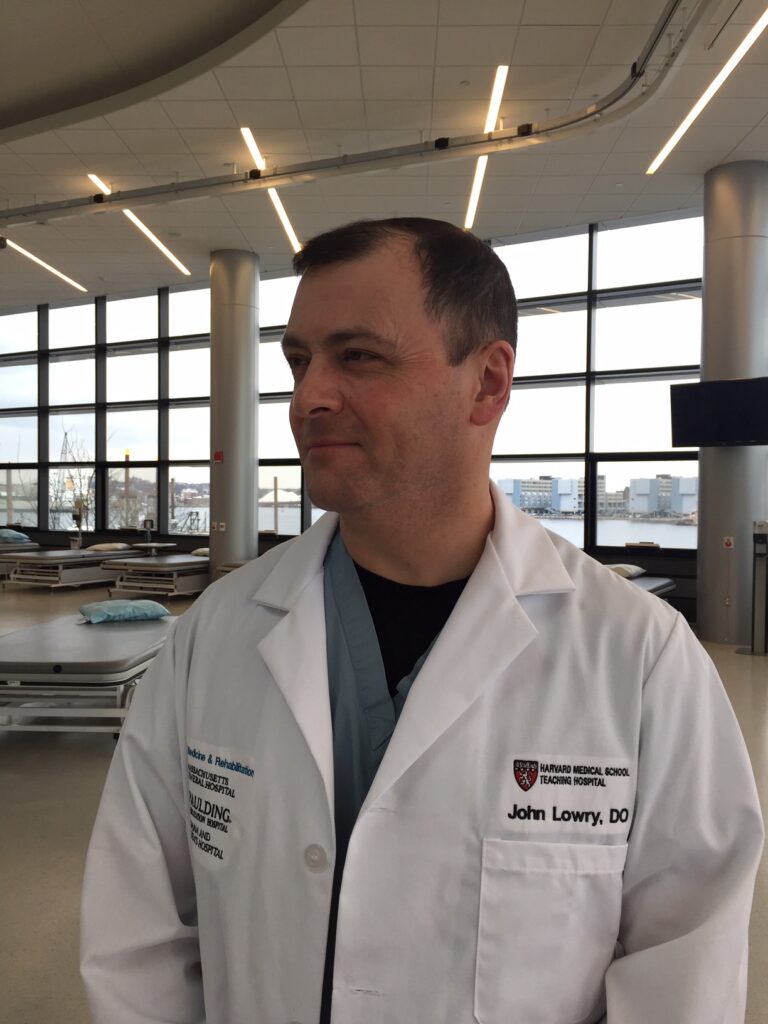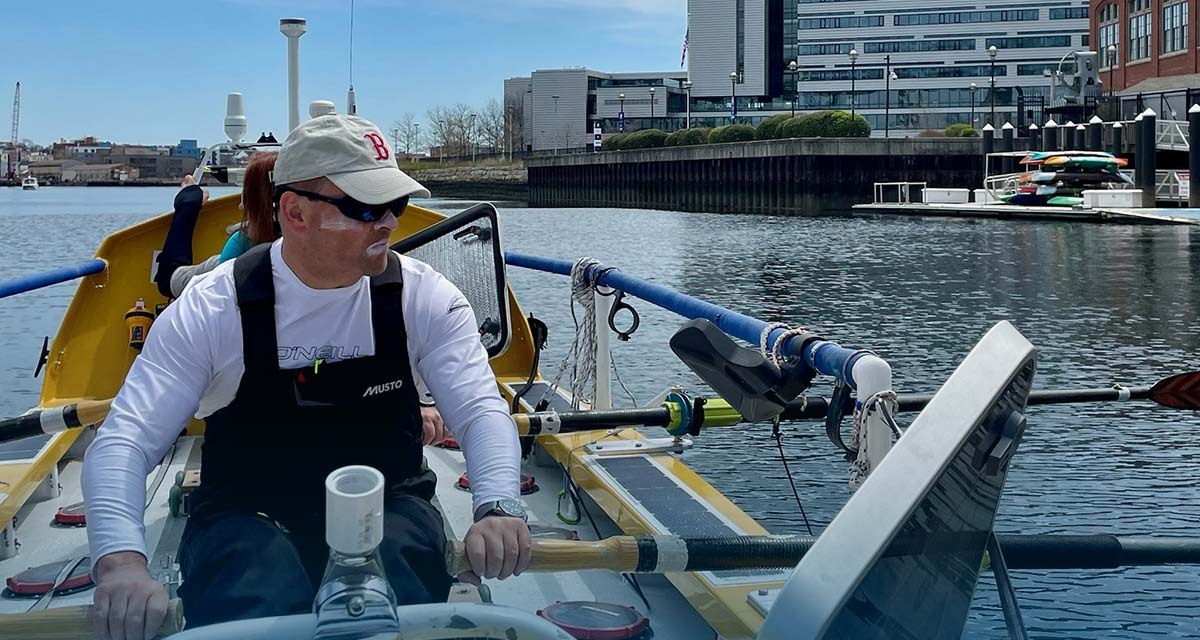John Lowry’s ’94 Ultimate Adventure: Rowing 3,275 Miles Across the Atlantic
John Lowry ’94 (biology, premed concentration) is no stranger to challenge. When he was a student at Gordon, he served in Guatemala as a physician’s assistant for a summer and delivered nine babies in 10 weeks. He’s braved snow in the Adirondack mountains while on La Vida expeditions. He’s achieved a black belt in martial arts and completed the Mount Washington Auto Road Bicycle Hillclimb Race, the toughest bike ride in the White Mountains. And when he’s not out kayaking, he’s serving as a physiatrist at the Spaulding Rehabilitation Hospital Network, helping patients recover and deal with everything from spinal cord injuries to brain damage.
But on June 1 Lowry will undertake his greatest challenge yet: being a part of the first- ever human-powered rowboat Atlantic crossing from Boston to London. Over the course of about 45 days, he and three others will row 24 hours a day to cover 3,275 miles across the Atlantic Ocean. “There’s a tradition of Christians going into the wilderness to reconnect, to find vision, to find purpose,” Lowry says. “This desert just happens to be the North Atlantic.”

Preparing for the Journey
Lowry first heard of the adventure through an old childhood friend, Bryan Fuller, a veteran and fellow adventurer who rowed from West Africa to the Carribean in 2012. He recruited Lowry to be part of his team due to Lowry’s medical experience—it helps to have a doctor around during extreme expeditions. The other members of the rowboat team are Elizabeth Gillmore, a World Rowing champion, and Klara Antsley, a native of Wales who has completed many endurance-style boat races.
Lowry will be responsible for ensuring everyone stays as healthy as possible during the trip. He’s also in charge of navigation and getting the team into optimal position for making the fastest trip across. While they’ll have the help of the Gulf Stream and can radio for help if needed, they’ll also be dodging commercial shipping routes, battling the elements, and possibly encountering hurricane season. “We’re going to basically be using our bodies in an unsustainable manner, each of us rowing 12 hours every day in two-hour shifts,” he says. “The faster we get across, the safer we all are.”
For the past year the crew has been training extensively for the challenge, getting certified in CPR, cold water survival, navigation and communication tools, as well as preparing for shift changes and “man overboard” procedures. They’ve also been exercising and rowing constantly to get in shape and build muscle. While on the boat they’ll only eat military-grade, freeze-dried food. They’ll have only a small cabin on board for naps and a bucket for a bathroom.
Despite the challenge Lowry is excited for what lies ahead. “We’re going to see stars we’ve never seen before, fish and animals you only see in the deep ocean. It’s not uncommon for whales to come up right next to the boat and watch you row. It’s going to be something that will stick with all of us for our entire lives,” he says.
The Purpose of the World’s Toughest Row
The crew will consume 4,000 calories a day but burn through 8,000 a day, which could cause them to lose 20-30 pounds each. They could face great fatigue, seasickness, bad weather, capsizing and other threats. So why go through such a grueling challenge?
The crew members are raising funds and awareness for different organizations and social causes, from veterans to disabled athletes. On a personal note, Lowry believes challenges like these are what grow a person more than anything else. “I’m really interested in the person that I’m going to be on the other side of it, how deep an individual has to dig inside to pull something like this off. It expands you in two directions: It makes you on the one hand humbler and more aware of your finite place and creation, and on a macro scale, you develop a much deeper awareness of what you’re capable of doing.”
Lowry hopes his accomplishment will inspire others, like the patients he helps daily, to push themselves to achieve things they didn’t believe possible. “As a physiatrist I do more than just medical care—it’s advocacy and human rights work too. My field helps people to live the fullest life possible. I have a patient with a spinal cord injury who has a son or daughter living halfway across the country, but they’re afraid to fly. So we worked together to problem solve and come up with a way for them to make the trip without putting anyone at risk. That to me is absolutely the best feeling.”
Follow John and His Team
You can support Lowry and learn more about his expedition at www.londoncallingrow.com. Once their expedition starts you can follow their path using their Daw tracker, or find their exact location with their Starlink system. They will be one of the first, if not the first, trans-ocean expeditions with internet access!
 The Bell
The Bell